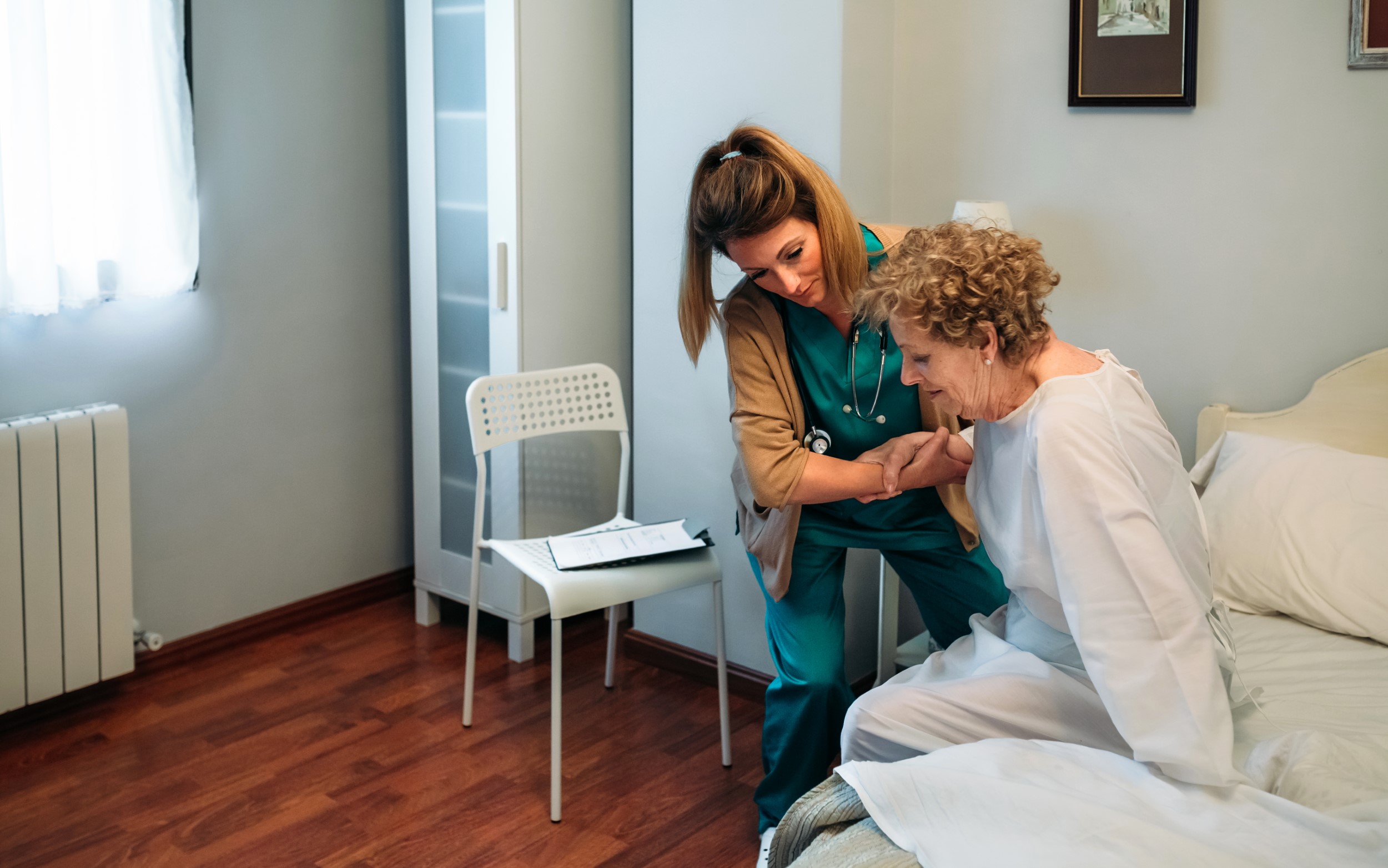As life’s journey continues, we face harder and harder decisions. Choosing hospice care is one such decision that people can find support for in many communities. Hospice care is meant to help those with advanced illnesses who need pain relief and comfort as they reach their next transition.
Depending on their symptoms, your loved one may be able to benefit from hospice care at home, where they’re most comfortable. However, a senior living community can also offer resources, staff, and expertise to provide compassionate care.
There are different levels of hospice care, each with its own unique purpose and focus. The 4 levels of hospice care are routine home care, general inpatient care, continuous home care, and respite care. Understanding each level can help you and your family determine the right choice for your needs.
What Is Hospice Care?
Hospice care isn’t simply about managing pain and symptoms. Caretakers can assist with day-to-day activities, cleaning, and shopping—and provide emotional and spiritual support for those with a life-limiting illness.
Hospice care is a difficult topic to discuss, but it’s important too. It’s a choice only our loved ones can make, so it’s on us to understand what it is and why they may choose it. At its core, hospice care is all about providing comfort and dignity to our loved ones.
Hospice care is not about giving up or abandoning hope. Ongoing treatments can be a drain on the body and the mind. Instead, hospice care is about making the most of the time you have with family and friends.
Routine Home Care
Routine home care is the first level of hospice care. It’s for those who can stay in their own homes but need assistance managing their symptoms and pain. Routine home care is provided by a team of healthcare professionals, including nurses, social workers, chaplains, and volunteers.
During routine home care, a hospice team works with you and your loved one to develop a plan of care that meets their unique needs. This plan may include medication management, wound care, emotional needs, and spiritual support. The hospice team may regularly visit to monitor your loved one’s condition and adjust their care plan as needed.
Routine home care is a level for individuals who want to stay in their own homes with the support of their friends and family. They can maintain their independence while receiving the care they need.
General Inpatient Care
General inpatient care is for those who need more intensive care than can be provided at home. Healthcare professionals typically offer this level of care in a hospital or hospice community. General inpatient care is focused on the short-term management of heightened symptoms and providing comfort to patients experiencing a medical crisis.
This level of care may include pain management, wound care, and respiratory support to help treat symptoms that are unmanageable at home.
Continuous Home Care
Continuous home care is for those who require around-the-clock care and support, typically due to short periods of crisis. It’s generally provided in the patient’s home by a team of hospice professionals. This team could also include a homemaker or a home health aide.
Much like general inpatient care, continuous home care is for when your loved one is dealing with pain or symptoms that are too much for routine care. A hospice team giving this level of care can provide 24-hour support for a patient and their family.
This support may include assistance with bathing, dressing, and other activities of daily living. Continuous care allows your loved one to remain in their own home while receiving the care they need.
Respite Care
It’s common for family members to act as caregivers for their loved ones, but it can be an incredibly demanding and exhausting job. Caregiving can take a toll on a person’s physical, emotional, and mental health, leading to caregiver burnout. Respite care can give caregivers a much-deserved break.
Respite care is not an admission of weakness but rather a recognition of the challenges of caregiving. It allows you to recharge, attend to your needs, and return feeling refreshed and re-energized.
While at this level of hospice care, your loved one will be cared for in a community that can maintain the expected level of care.
Care for the Journey Ahead
As an experienced care community, Del Corazon is committed to providing compassionate and comprehensive hospice care to our residents and their families. We understand this can be a difficult time, and we’re here to support you every step of the way.
Reach out to us if your loved one is considering hospice care. We’re happy to answer your questions and help you explore your options.



